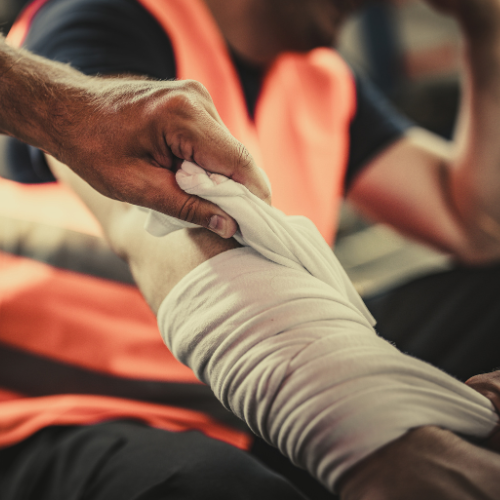
OSHA maintains records on the most frequently cited construction standards from worksite inspections for each fiscal year and compiles a list within particular industries. The latest records outline the top 10 standards cited within the construction industry during fiscal year 2023 (October 2022 through September 2023) and the total number of violations for each standard. By reviewing these findings, employers can better understand common worksite hazards and associated prevention strategies—thus allowing them to take steps to eliminate potential safety risks, prevent employee injuries and mitigate OSHA penalties. Here’s a list of OSHA’s top 10 most frequently cited construction standards in fiscal year 2023:
- Duty to have fall protection, 6,076 citations (29 CFR 1926.501)—This standard refers to the practice of identifying fall hazards and providing protection from those hazards when needed. Requirements include identifying, inspecting and assessing workplace conditions for fall or falling object hazards.
- Ladders, 2,457 citations (29 CFR 1926.1053)—This standard describes safety requirements for ladders, including self-supporting ladders, single ladders, extension ladders and fixed ladders. Requirements include following ladder specifications, inspection procedures, removal-from-service protocols and employee training guidelines.
- General scaffold requirements, 2,319 citations (29 CFR 1926.451)—This standard discusses fall arrest systems, supported scaffold platforms and suspended scaffolding. Requirements include following scaffold erecting and dismantling specifications, training guidelines and inspection measures.
- Fall protection training requirements, 1,835 citations (29 CFR 1926.503)—This standard applies to employees working at heights and the training they must receive. Requirements include training employees in fall hazards, providing certifications and retraining when necessary.
- Eye and face protection, 1,783 citations (29 CFR 1926.102)—This standard refers to eye and face protection, such as safety glasses, goggles and face shields. Requirements include identifying hazards, supplying employees with proper protection and ensuring they utilize it correctly.
- General safety and health provisions, 886 citations (29 CFR 1926.20)—This standard refers to a contractor’s requirements to provide workers with a safe work environment. Requirements include preventing laborers from working in surroundings or conditions that are unsanitary, hazardous or dangerous and adhering to compliance duties; following accident prevention responsibilities; and providing personal protective equipment and training.
- Head protection, 874 citations (29 CFR 1926.100)—This standard refers to the use of protective helmets. Requirements include providing head protection that meets specifications for different job environments.
- Specific excavation requirements, 698 citations (29 CFR 1926.651)—This standard refers to the requirements for safe surface or underground excavation operations, including providing proper atmospheres, structural stability and access/egress. Other requirements include locating utilities; conducting daily inspections; providing protection from vehicles, water accumulation and falling material; monitoring atmospheric conditions; and having emergency rescue equipment readily available.
- Aerial lifts, 662 citations (29 CFR 1926.453)—This standard discusses how aerial lifts must conform to applicable national standards. Requirements include ensuring proper operation, training, and inspection procedures.
- Fall protection systems criteria and practices, 575 citations (29 CFR 1926.502)—This standard refers to providing and installing fall protection systems to prevent fall hazards. Requirements include implementing systems with the proper specifications for guardrail systems, safety net systems and personal fall arrest systems.
Contact us to see how you could minimize risk:

